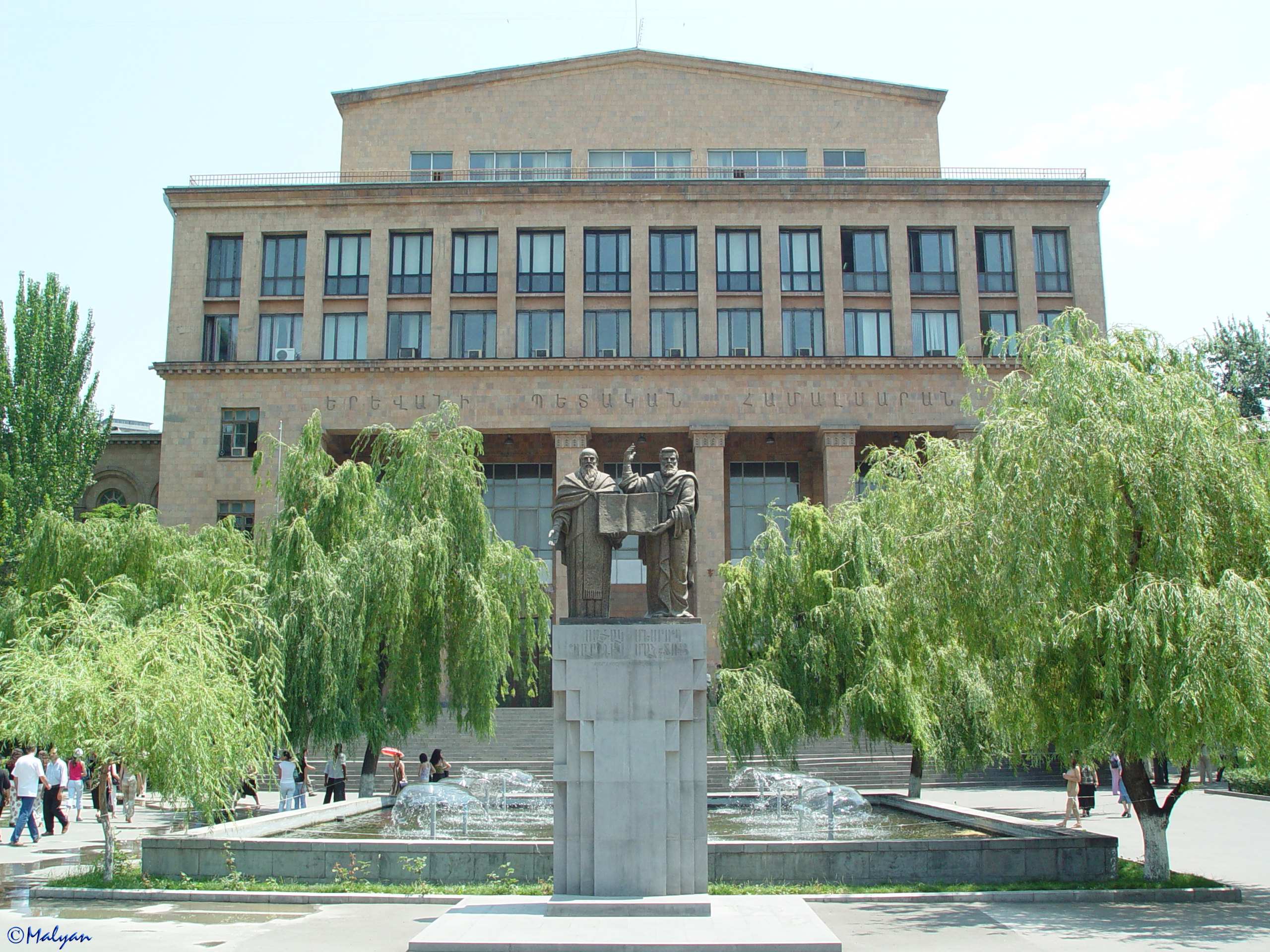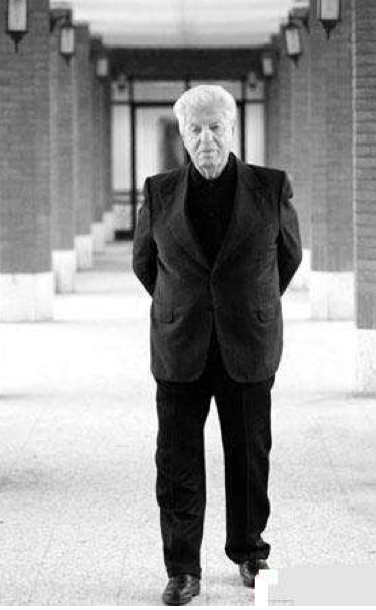Kaveh Farrokh provided a presentation at (بخش ایران شناسی دانشگاه دولتی ایروان) the University of Yerevan Iranian Studies Department at the “Shirvan, Arran, and Azerbaijan: A Historical-Cultural Retrospective” conference (kindly click here for more information on all conference participants and their topics).
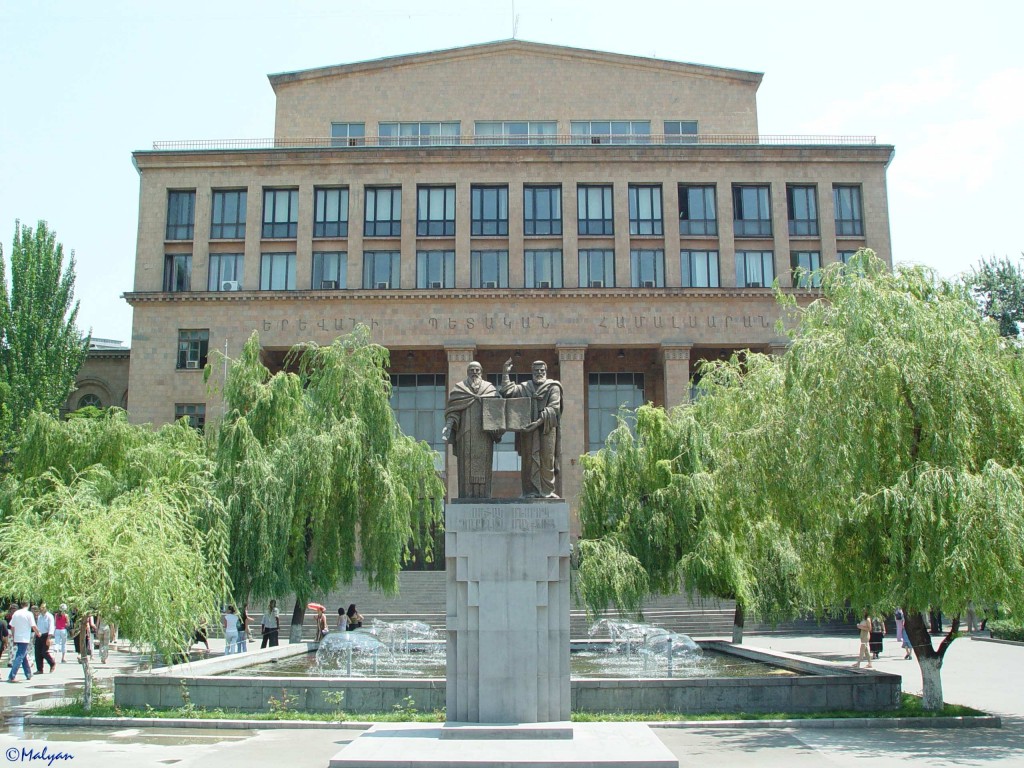 Frontal view of the State University of Yerevan, host to the“Shirvan, Arran, and Azerbaijan: A Historical-Cultural Retrospective” conference on Nov. 1-2, 2013. The university is host to an excellent Iranian Studies program, staffed by exemplary researchers such as Professor Garnik S. Asatrian (Chair, Iranian Studies Dept., Yerevan State University; Editor, “Iran and the Caucasus”, BRILL, Leiden-Boston) and Professor Victoria Arakelova (Associate Professor, Department of Iranian Studies, Yerevan State University; Associate Editor, “Iran and the Caucasus”, BRILL, Leiden). The conference has been made possible through the works of Professors Asatrian and Arakelova.
Frontal view of the State University of Yerevan, host to the“Shirvan, Arran, and Azerbaijan: A Historical-Cultural Retrospective” conference on Nov. 1-2, 2013. The university is host to an excellent Iranian Studies program, staffed by exemplary researchers such as Professor Garnik S. Asatrian (Chair, Iranian Studies Dept., Yerevan State University; Editor, “Iran and the Caucasus”, BRILL, Leiden-Boston) and Professor Victoria Arakelova (Associate Professor, Department of Iranian Studies, Yerevan State University; Associate Editor, “Iran and the Caucasus”, BRILL, Leiden). The conference has been made possible through the works of Professors Asatrian and Arakelova.
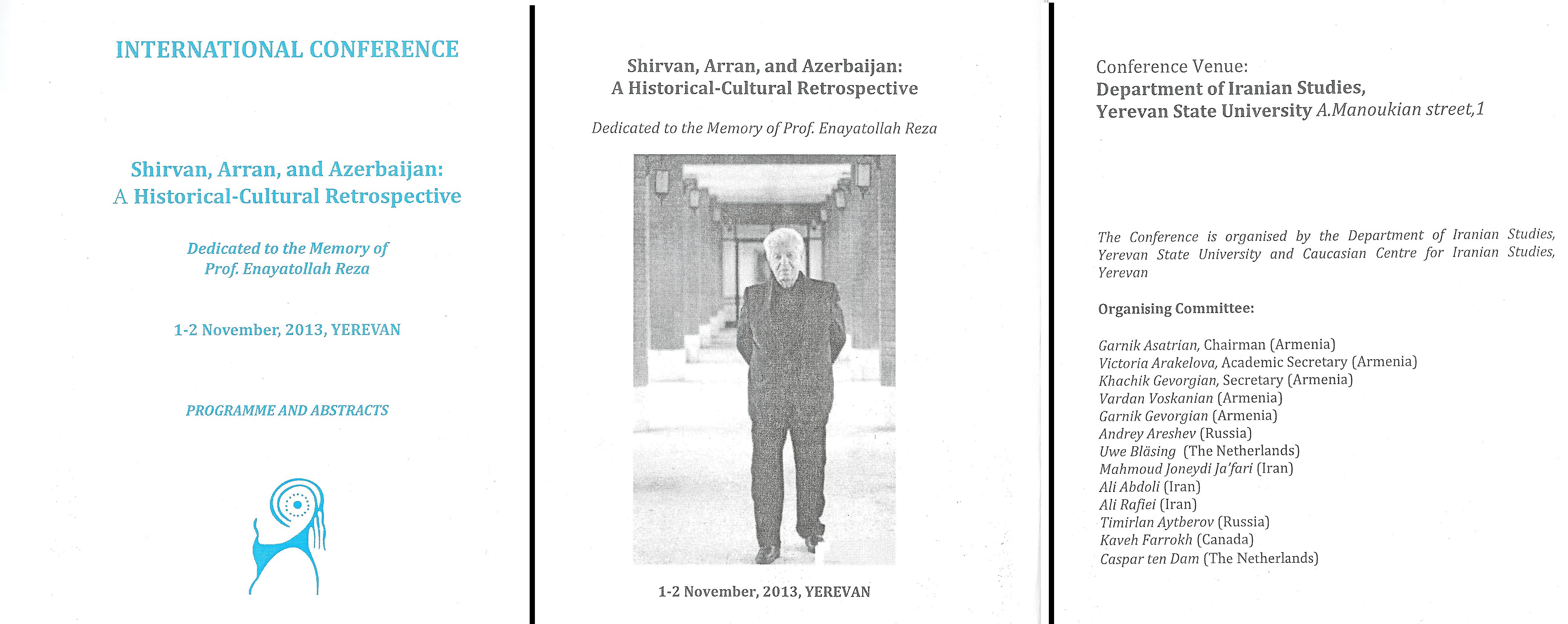 Cover page, dedication and list of organizers of the conference. Kindly note that Kaveh Farrokh was one of the members of the organizing committee for the conference at Yerevan State University (Click to enlarge to see list of organizers). For more information on the conference kindly click here for more information on all conference participants and their topics.
Cover page, dedication and list of organizers of the conference. Kindly note that Kaveh Farrokh was one of the members of the organizing committee for the conference at Yerevan State University (Click to enlarge to see list of organizers). For more information on the conference kindly click here for more information on all conference participants and their topics.
Kaveh Farrokh’s presentation and abstract for the conference was as follows:
“Cultural Links between Iran and Arran (Modern Republic of Azerbaijan) from Antiquity to the 1900s” (November 2, 2013)
This paper will provide an overview of the cultural and historical links between ancient Albania/Arran and Iran from antiquity to the early twentieth century. A comprehensive series of Classical and pre- Islamic Iranian sources as well as archaeological studies are referenced for the pre-Islamic (Medo-Achaemenid and Partho-Sassanian) era. Examples cited include discoveries of Achaemenid palaces in the region as well as the role of the Albanian knights in the Sassanian army (Spah). The post-Islamic era is discussed with respect to Islamic and European primary sources and cartography with references to languages, the Safavid and post-Safavid eras to the early 1900s.
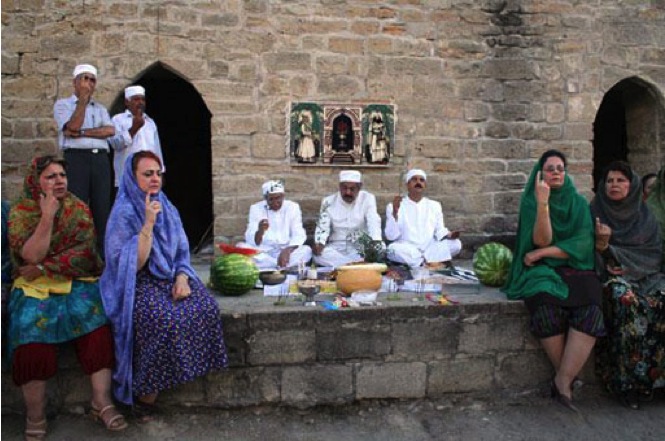 Modern-day Zoroastrians from Iran at the Baku Atash-kade (Zoroastrian Fire-Temple) being led in religious ceremonies by Mobed Kourosh Niknam (Source: Image by Farroukh Aliev with this first appearing in Fravahr.org).
Modern-day Zoroastrians from Iran at the Baku Atash-kade (Zoroastrian Fire-Temple) being led in religious ceremonies by Mobed Kourosh Niknam (Source: Image by Farroukh Aliev with this first appearing in Fravahr.org).
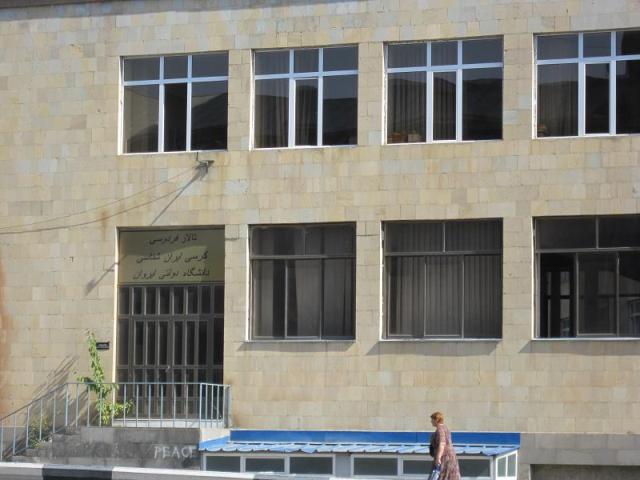 The Hall of Firdowsi at (تالار فردوسی در بخش ایران شناسی دانشگاه دولتی ایروان) the Iranian Studies department of Yerevan State University.
The Hall of Firdowsi at (تالار فردوسی در بخش ایران شناسی دانشگاه دولتی ایروان) the Iranian Studies department of Yerevan State University.
After the conference, Farrokh delivered an additional lecture on November 4, 2013 at the University of Yerevan entitled:
Cultural Links between Iran, Armenia and Georgia from Antiquity to the early 1800s
This lecture will provide an overview of the cultural and historical links between ancient Iran, Armenia and Georgia,notably with respect to the Achaemenid, Parthian and Sassanian eras. The role of Northern Iranian peoples in the Caucasus and their impact upon the Caucasus is also examined. Topics addressed the role of the Naxarar Armenian knights in the Sassanian Spah (Army) and the role of Armenia and Georgia in cultural contacts between the Iranian Plateau and Eastern Europe. The discussion will conclude with the promotion of Persian language and literature in the Caucasus during the post-Islamic era up to the early 1800s.
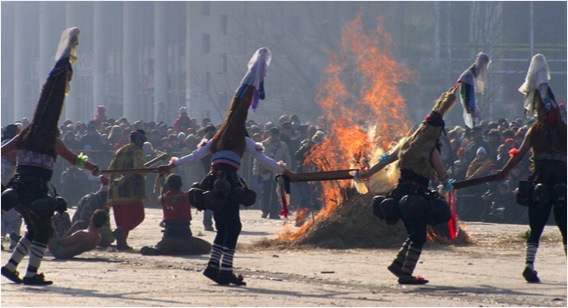 The Surva festival in Bulgaria. Local traditions ascribe this festival to the ancient Iranian cult of Zurvan (Master of Time); the Caucasus has long acted as a conduit between Eastern Europe and the Iranian plateau.
The Surva festival in Bulgaria. Local traditions ascribe this festival to the ancient Iranian cult of Zurvan (Master of Time); the Caucasus has long acted as a conduit between Eastern Europe and the Iranian plateau.
The “Shirvan, Arran, and Azerbaijan: A Historical-Cultural Retrospective” conference has been dedicated to the memory of the late Professor Enayatollah Reza.

